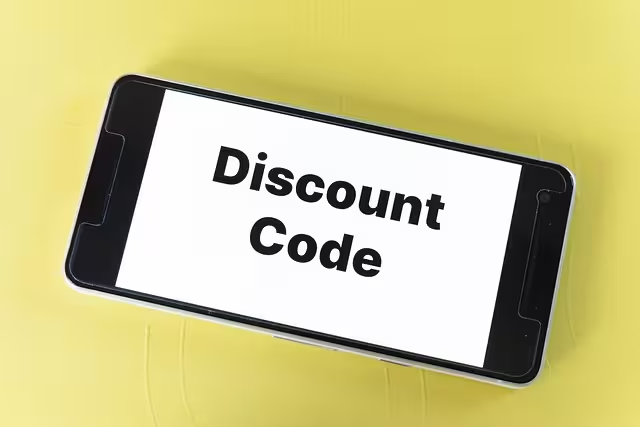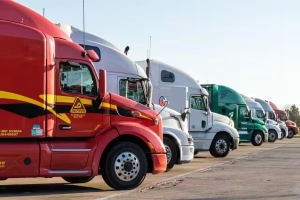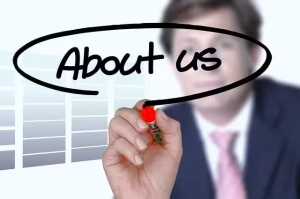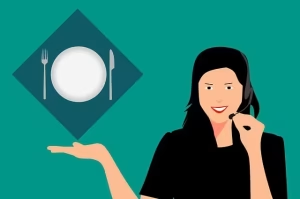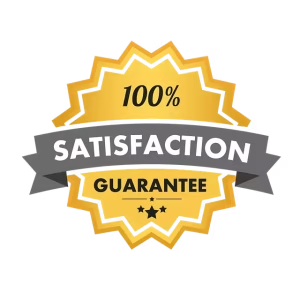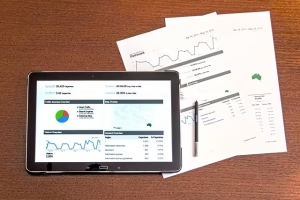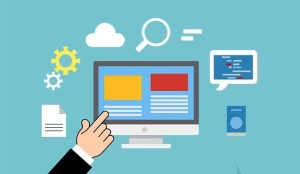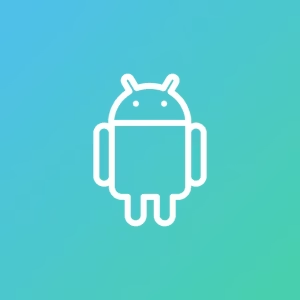In the modern retail environment, the classic loyalty program—the simple stamp card or the points-for-purchase system—is facing a significant challenge. Customer attention has never been more divided. Consumers are constantly interacting with a dozen different brands across multiple digital platforms, and the simple promise of a ten percent discount after ten purchases is often no longer enough to secure their dedicated business. The connection between a customer’s digital life and their physical actions has become the new frontier for engagement. Simply waiting for them to walk through the door is a passive strategy in a market that demands active, intelligent outreach.
This is where geofencing emerges not just as a novel technology, but as a fundamental strategic tool. It provides a precise, powerful bridge between the digital relationship you build with your customers online and their physical presence in the real world. Imagine being able to communicate with your most loyal customers at the exact moment your message is most relevant to them: when they are just around the corner from your store.
This article is designed to serve as a strategic blueprint for small and medium-sized retailers. We will deconstruct the technology, analyze its strategic value, and provide a clear, step-by-step framework for integrating geofencing into your loyalty program. We will cover the foundational concepts, the implementation process, best practices from industry leaders, and the critical metrics needed to measure success.
Foundational Concepts: Understanding the Core Technology

Before we can build a strategy, we must first understand our tools. The terms “geofencing,” “geotargeting,” and “beacons” are often used interchangeably, but they represent distinct technologies with unique functions. A clear understanding of their differences is the first step toward effective implementation.
What is Geofencing?
At its core, geofencing is the creation of a virtual, invisible boundary around a real-world geographical area. Think of it like an invisible electric fence for a dog, but for a customer’s smartphone. This virtual perimeter is created using software that leverages a device’s location services, which include GPS (Global Positioning System), Wi-Fi, RFID (Radio-Frequency Identification), or cellular data.
When a customer who has your mobile app installed enters or exits this pre-defined boundary, it triggers a specific, pre-programmed action. This action is most commonly a push notification sent directly to their device. The key concept here is the trigger. The system isn’t constantly watching; it’s waiting for a specific event—crossing the line—to occur. This makes it a highly effective tool for timely and contextually relevant communication. For example, a loyalty member entering the geofence around your mall could trigger a message that says, “Welcome back to the Northfield Mall! Don’t forget you have a $5 reward waiting for you at our store.”
Geofencing vs. Geotargeting vs. Beacons
Understanding the nuances between these location-based technologies is critical for choosing the right tool for the job.
- Geofencing is Trigger-Based. As we discussed, its power lies in reacting to the specific action of a user entering or exiting a defined zone. It’s about sending the right message at the right time based on an immediate change in location. It’s a real-time engagement tool.
- Simple Analogy: Geofencing is like a doorbell. It makes a sound (sends a notification) only when someone crosses the threshold (enters the geofence).
- Geotargeting is Audience-Based. Geotargeting, on the other hand, involves delivering content or advertisements to users who fit specific criteria, one of which is their location. This location can be their current position, or places they have been in the past. It’s less about an immediate trigger and more about defining an audience segment. For example, a national pizza chain might use geotargeting to show a special “2 for 1” ad to all mobile users who are currently within the city limits of Philadelphia. They are targeting a broad audience in a location, not individuals crossing a specific line.
- Simple Analogy: Geotargeting is like sending mail flyers to a specific zip code. Everyone in that zip code gets the flyer, regardless of whether they are walking past the post office at that moment.
- Beacons are Proximity-Based. Beacons are small, physical hardware devices that you place inside your store. They use Bluetooth Low Energy (BLE) to transmit a signal to nearby smartphones. While geofences are great for macro-locations (like the area around your store or a city block), beacons are designed for micro-locations—pinpointing a customer’s position within your store with remarkable accuracy. You could place a beacon in the shoe department, and when a loyalty member with your app open lingers there, you could send a push notification about a special 20% discount on boots.
- Simple Analogy: Beacons are like a helpful store employee standing in a specific aisle. They only talk to you about the products in that aisle when you are standing right there.
For a retail loyalty program, geofencing is the tool that gets them to your door, and beacons are the tool that enhances their experience once they are inside.
The Strategic Imperative: Why Geofencing is a Game-Changer for Retail Loyalty

Combining geofencing with your loyalty program isn’t just a gimmick; it’s a powerful strategic move that addresses several key business challenges. It transforms your loyalty program from a passive data-collection tool into an active driver of business results.
Drive In-Store Traffic
The most direct benefit of geofencing is its ability to convert digital presence into physical foot traffic. A customer might have hundreds of loyalty points sitting in their account, but they can easily forget about them. A timely reminder can be the nudge they need to choose your store over a competitor’s. When a loyalty member is running errands and passes within a few blocks of your location, a geofence can trigger a personalized message like, “Hey Sarah, you’re nearby! Pop in and use your 250 points for a free coffee today.” This message is relevant, timely, and actionable, creating a visit that might not have happened otherwise.
Enhance Personalization
Modern consumers expect personalization. Generic, one-size-fits-all marketing is increasingly ignored. Geofencing allows you to layer location data on top of the purchase history you already have for your loyalty members. You know what they buy; now you know where and when they are. This combination is incredibly powerful.
For example, if you know a customer frequently buys running shoes, you can set up a geofence around a local park. When they enter the park for a run, you can send a notification: “Enjoy your run! Did you know our new line of high-performance socks is now in stock? Stop by after and get 15% off with your loyalty account.” This level of personalization shows the customer you understand their lifestyle, not just their wallet.
Boost Customer Engagement
Engagement is about creating meaningful interactions that keep your brand top-of-mind. Standard loyalty program emails can easily get lost in a crowded inbox. A geofenced push notification, however, is an immediate and direct line of communication. It happens in the moment and feels more like a helpful tip than a marketing blast. You can create a variety of engaging triggers: a “Welcome back!” message when they arrive, a “Thanks for your visit!” message with bonus points when they leave, or even a special offer if they “dwell” or stay in your store for more than 20 minutes. These small, consistent interactions build a stronger, more dynamic relationship with your customers.
Gather Actionable Customer Data
Beyond driving immediate sales, geofencing is a powerful data collection tool. By analyzing geofence data (in an aggregated and anonymized way to protect privacy), you can gain incredible insights into customer behavior. You can learn:
- Which times of day are most popular for your loyalty members.
- How long customers typically stay in your store (dwell time).
- The frequency of visits for different customer segments.
- Which of your geofenced offers get the highest response rate.
This data is pure gold. It allows you to move from guessing what your customers want to knowing how they behave. You can use these insights to optimize staffing schedules, refine your marketing messages, and make smarter inventory decisions.
Combat Customer Churn
Every business loses customers. The key is to win them back. Geofencing can be a powerful tool for re-engaging lapsed or “at-risk” loyalty members. You can create a specific audience segment of customers who haven’t visited in over 90 days.
Then, you can set up geofences around your store and even your competitors’ locations. When a customer from this lapsed segment enters one of these zones, you can trigger a highly compelling “We miss you!” offer. A message like, “It’s been a while! Come back and see what’s new. We’ve loaded a $10 credit onto your loyalty account, just for you. It expires in 48 hours.” This combination of a valuable offer and a sense of urgency can be incredibly effective at winning back their business.
The Implementation Blueprint: A Step-by-Step Guide to Launching Your Program

Implementing a geofencing strategy may seem technically complex, but by breaking it down into a logical series of steps, any business can create a successful program.
Step 1: Define Clear Objectives & KPIs
Before you draw a single virtual line, you must define what success looks like. What, specifically, do you want to achieve with this program? Your goals should be clear, measurable, and realistic. Are you trying to:
- Increase the average number of visits per month from your loyalty members?
- Increase the average transaction value of those members?
- Reactivate a certain percentage of dormant customers?
- Drive traffic during historically slow periods (e.g., Tuesday afternoons)?
Once you have your objectives, you need to establish your Key Performance Indicators (KPIs). KPIs are the specific metrics you will use to track your progress. Think of them as the numbers on the scoreboard. For a geofencing loyalty program, your KPIs might include:
- Notification Opt-in Rate: What percentage of your app users agree to receive notifications and share their location?
- Trigger Rate: How many notifications are being successfully sent?
- Engagement Rate: What percentage of users who receive a notification tap on it?
- Visit Uplift: Are you seeing a measurable increase in store visits from the group that receives notifications compared to a control group that doesn’t?
- Redemption Rate: What percentage of the geofenced offers are actually being used in-store?
Defining these upfront is critical. Without them, you’ll be flying blind, unable to tell if your investment of time and money is paying off.
Step 2: The Technical Prerequisites
Geofencing isn’t magic; it relies on a few key technical components.
- A Branded Mobile Application: This is the heart of your program. A geofencing strategy simply cannot work without a mobile app that your customers have downloaded onto their phones. This app is the delivery vehicle for your push notifications and the central hub for your loyalty program.
- User Opt-In (Permission): This is perhaps the most important prerequisite. For your app to see a user’s location and send them notifications, the user must explicitly grant permission. When they first install the app, it will ask, “[App Name] would like to use your location” and “[App Name] would like to send you notifications.” You cannot force this. The key is to communicate the value exchange clearly. Before asking for permission, have a screen that explains why you need it: “Enable location services to receive exclusive offers when you’re near our store!” Being transparent and highlighting the benefit to the customer will dramatically increase your opt-in rates.
Step 3: Select Your Geofencing Platform
You don’t need to build this technology from scratch. Numerous third-party platforms provide the software (SDKs, or Software Development Kits) that you can integrate into your existing mobile app. These platforms give you a dashboard where you can easily draw your geofences on a map, create your trigger rules, and write your notification messages.
Some well-regarded platforms in this space include Plot Projects, Airship, Braze, and CleverTap. When evaluating a platform, consider factors like ease of use, the quality of their analytics, their ability to integrate with your existing customer database or CRM, and of course, their pricing structure. For most small businesses, choosing a platform with strong customer support and a user-friendly interface is paramount.
Step 4: Strategically Define Your Geofences
Where you draw your virtual fences is just as important as the message you send. Don’t just place one large circle around your store. Think like a strategist.
- Your Store’s Perimeter: This is the most obvious and essential fence. Set it to a radius that makes sense for your location. If you’re in a walking-heavy downtown area, a 100-meter radius might be perfect. If you’re in a suburban shopping plaza where people drive, a larger 500-meter radius that includes the parking lot is more effective.
- Competitors’ Locations (“Geoconquesting”): This is a powerful and proactive tactic. Draw a fence around your top one or two direct competitors. When one of your loyalty members enters their store, you can send a targeted, competitive offer. This requires a delicate touch—the message should be enticing, not desperate. A simple, “Thinking about coffee? Remember your next one is free with us. You’re only 25 points away!” can be enough to sway a purchase decision.
- Complementary Locations: Think about where your customers go before or after they visit you. If you run a high-end clothing boutique, set up a fence around the popular upscale restaurants nearby. If you own a hardware store, fence the local community garden. This allows you to send a relevant message that aligns with their current activity, like, “Finishing up dinner? We’re open for another hour—stop by and browse our new arrivals.”
- Parking Lots & Transit Hubs: Catch customers during their travel moments. A fence around the entrance to your shopping center’s main parking garage or the nearby bus stop can trigger a reminder right as they are making their final decisions about where to go.
Step 5: Craft Contextual and Compelling Triggers & Messages
The final piece of the puzzle is the message itself. A poorly written message can make the entire system feel intrusive or annoying. A well-crafted one feels helpful and personal. Here are some examples for different triggers:
- Enter Trigger (Your Store): “Welcome back to The Gadget Hub, Alex! Your loyalty status just got you early access to our new drone collection. Ask an associate to see it!”
- Exit Trigger (Your Store): “Thanks for stopping by! We just added 25 bonus points to your account. We hope to see you again soon.”
- Dwell Trigger (In-Store for >15 minutes): “Looks like you’re finding some interesting things! Tap here to open your loyalty wallet in the app for a quick checkout.”
- Enter Trigger (Competitor): “We see you’re in the neighborhood. Just a reminder, all of our premium jeans are buy-one-get-one-50%-off this week. Don’t miss out!”
- Lapsed Customer Trigger (Near Your Store): “Long time no see! We’ve missed you at Clara’s Cafe. Your favorite latte is on us today. Tap to redeem.”
The best messages are personal (using the customer’s name), provide clear value, and often have a simple call to action.
Real-World Examples of Geofencing in Retail Loyalty

Theory is one thing; seeing it in action is another. Let’s look at how both large corporations and small businesses can apply these principles.
Entity Example (Large Retail): Starbucks
Starbucks is a master of mobile engagement, and geofencing is a key part of their strategy. Their app uses location services in several clever ways. When you approach a Starbucks location, the app can send you a push notification reminding you of a current promotion or a special offer available to Rewards members. More importantly, it uses your proximity to streamline the user experience. As you get close to the store, the app’s home screen might change to highlight the “Order Ahead” feature for that specific location, making it incredibly easy to place an order and have it waiting for you.
This removes friction from the buying process and reinforces the value of being both a Rewards member and an app user.
Entity Example (Specialty Retail): Sephora
Sephora’s mobile app uses its “Store Companion” mode to enhance the in-store shopping experience. When a “Beauty Insider” (their loyalty program member) enters a store, geofencing and beacon technology work together to welcome them. The app can automatically pull up their loyalty card barcode for easy scanning at checkout, display their current point balance, and show them a list of products they’ve previously saved or added to their online cart. This turns the customer’s phone into a personalized shopping assistant, seamlessly blending their online and offline activities and making the loyalty program an active part of their physical shopping trip.
Hypothetical Example (Small Business): “The Local Bookstore”
Let’s imagine a small, independent bookstore named “Bookmarks & Brews.” The owner, Maria, wants to compete with the big online retailers.
- The Goal: She wants to increase weekday foot traffic, which is typically slow.
- The Setup: She works with a developer to add a geofencing SDK to her store’s loyalty app. She draws three key geofences:
- A 200-meter radius around her store.
- A fence around the large corporate office building two blocks away.
- A fence around the popular city park a half-mile away.
- The Campaigns:
- Lunchtime Lure: For the office building fence, she sets up a trigger that is active only between 12:00 PM and 1:30 PM on weekdays. The message: “Need a break from the office? Step into a new world. All loyalty members get a free coffee with any book purchase at Bookmarks & Brews today!”
- Weekend Wanderer: For the park fence, she sets a trigger that is active on Saturdays and Sundays. The message: “Enjoying the fresh air? The perfect book is waiting. You’re just a short walk from Bookmarks & Brews. Show this notification for 10% off your purchase.”
- The Welcome Back: For her store’s perimeter, she has a simple, welcoming message for any loyalty member who enters: “Welcome back to your happy place! Don’t forget to scan your app at checkout to earn points.”
By using geofencing, Maria isn’t just waiting for customers. She is intelligently reaching out to them at the moments they are most likely to be receptive, using her loyalty program as the hook to bring them in the door.
Best Practices and Avoiding Common Pitfalls
A powerful tool requires a responsible operator. Using geofencing incorrectly can do more harm than good, making your brand feel intrusive. Following these best practices is essential for long-term success.
Prioritize Value Over Volume
This is the golden rule of geofencing. Just because you can send a notification doesn’t mean you should. Bombarding your customers with constant messages is the fastest way to get them to turn off notifications or, worse, uninstall your app entirely. Every single message you send must provide clear and immediate value to the customer. Is it a discount? Is it bonus points? Is it helpful information? If the message only serves your business without offering a benefit to the customer, do not send it. A good rule of thumb is to set frequency caps—for example, ensuring no single user receives more than one or two geofenced notifications per week.
Respect User Privacy
Privacy is not an afterthought; it is a foundation of trust. Customers are becoming increasingly protective of their personal data, and location data is particularly sensitive.
- Be Transparent: Your privacy policy should have a clear, easy-to-understand section explaining exactly how you use location data. Avoid complex legal jargon.
- Get Explicit Consent: As mentioned earlier, you must get explicit opt-in permission from users. Never assume you have the right to track their location.
- Ensure Compliance: Be aware of data privacy regulations like the GDPR (General Data Protection Regulation) in Europe and the CCPA (California Consumer Privacy Act). These laws have strict rules about data collection and user rights. The guiding principle is to give users control over their own data.
- Make Opting-Out Easy: It should be just as easy for a user to turn off location services for your app as it was to turn them on. Hiding this option will only create frustration and distrust.
Test, Measure, and Optimize
Your first geofencing campaign will not be your best. The key to success is continuous improvement based on data. Use A/B testing to experiment with your messages. This is a simple but powerful technique: send two different versions of a notification to two small, separate groups of users. For example:
- Version A: “You’re near our store! Come in and get 15% off.”
- Version B: “You’re nearby! A special 15% discount is waiting for you in the store. Tap to see.”
Track which version gets a better engagement rate and redemption rate. Once you have a winner, you can send that more effective message to the rest of your audience. Constantly analyze your KPIs. Are people responding more to weekday or weekend offers? Are smaller, more frequent rewards better than one large one? The data will give you the answers and allow you to refine your strategy over time for the best possible return on investment (ROI).
Conclusion: Your Location is Your Greatest Loyalty Asset
In the competitive landscape of modern retail, the physical location of your store remains one of your most significant assets. Geofencing technology unlocks the ability to leverage that asset in a way that was never before possible. It transforms your loyalty program from a passive record of past purchases into an active, dynamic engine for future engagement.
By understanding the technology, defining clear goals, and thoughtfully crafting your messages, you can create a program that feels less like marketing and more like a personal concierge service for your best customers. You can drive traffic, deepen personalization, and build a level of brand loyalty that goes far beyond what points and punch cards alone can achieve. The technology is accessible, the strategies are proven, and the opportunity to connect with your customers in a more meaningful way is right at your fingertips.
Ready to build a loyalty program that truly connects with your customers? Contact WebHeads United today to explore how our geofencing expertise can drive your retail business forward.


